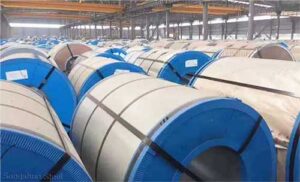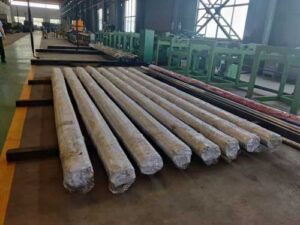Hot work tool steel is revered for its exceptional heat resistance and wear properties, making it a staple in industries such as die casting, forging, and extrusion. However, to ensure the longevity and reliability of hot work tool steel components in these demanding applications, maintaining toughness is equally critical. In this comprehensive article, we will delve into the various factors and techniques employed to preserve the toughness of hot work tool steel, safeguarding its ability to withstand high-temperature and high-stress environments.
1. Introduction
Toughness is a paramount property for materials used in high-temperature and high-stress applications. Hot work tool steel, while prized for its heat resistance and wear resistance, must also exhibit adequate toughness to withstand the rigorous conditions it encounters.
2. Hot Work Tool Steel: Composition and Properties
Alloying Elements
Hot work tool steel is meticulously engineered with a blend of alloying elements, including chromium, tungsten, molybdenum, and vanadium. These elements confer heat resistance, wear resistance, and toughness to the steel.
Heat Resistance and Wear Resistance
Hot work tool steel excels in heat resistance, maintaining its structural integrity even at temperatures exceeding 600°C (1112°F). Its wear resistance ensures that molds and tooling remain durable and precise.
The Role of Toughness
Toughness in hot work tool steel is critical for withstanding mechanical stress, impact, and thermal cycling without fracturing or failing. It ensures the material’s reliability in demanding industrial environments.
3. Challenges to Toughness
High Temperatures and Thermal Stress
Hot work tool steel operates in environments where extreme heat and thermal stress are prevalent. These conditions can impact toughness and necessitate measures to preserve it.
Mechanical Stress and Impact
Industries like forging and extrusion subject hot work tool steel to high mechanical stress and impact loads. Maintaining toughness is essential to prevent premature failure.
Abrasive Wear
In applications involving abrasive wear, such as die casting and extrusion, hot work tool steel must endure both high temperatures and abrasive forces while retaining its toughness.
4. Preserving Toughness in Hot Work Tool Steel
Alloy Design and Heat Treatment
Optimizing the alloy composition and heat treatment processes can enhance the toughness of hot work tool steel. Careful selection of alloying elements and precise heat treatment protocols are essential.
Stress Relieving and Annealing
Stress relieving and annealing processes help relieve internal stresses and improve the toughness of hot work tool steel. These treatments are especially beneficial after machining or forging.
Surface Treatments
Surface treatments like shot peening and nitriding can enhance the surface toughness of hot work tool steel, particularly in applications where abrasive wear is a concern.
5. Applications and Industries
Die Casting
Die casting molds in the automotive and aerospace industries require tough hot work tool steel to withstand high-pressure, high-temperature conditions without fracturing.
Forging
Hot work tool steel is used for forging dies, where toughness is crucial to endure the mechanical stresses and impact loads during the forging process.
Extrusion
In the extrusion of materials like metals and plastics, hot work tool steel with preserved toughness ensures dimensional stability and longevity of extrusion tooling.
Plastic Molding
Tough hot work tool steel is vital for plastic molding applications, where molds must endure both high temperatures and mechanical stress without failure.
6. Challenges and Considerations
Balancing Toughness with Other Properties
Achieving the right balance between toughness, heat resistance, and wear resistance is a complex task in alloy design. The choice of hot work tool steel must align with the specific requirements of the application.
Monitoring and Inspection
Regular monitoring and inspection of hot work tool steel components are essential to ensure that toughness is maintained throughout their service life. This includes non-destructive testing and stress analysis.
7. FAQs
Frequently Asked Questions About Maintaining Toughness in Hot Work Tool Steel
Q1. Can toughness in hot work tool steel be enhanced without compromising other properties?
Yes, toughness in hot work tool steel can be improved through alloy design, heat treatment, and surface treatments without significantly compromising heat resistance and wear resistance. Balancing these properties requires careful engineering.

